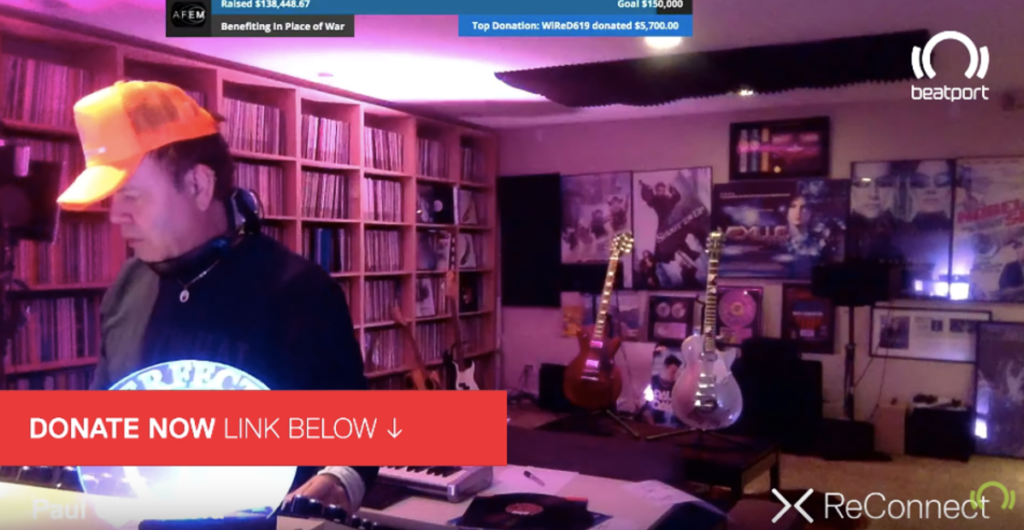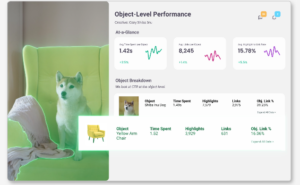By Phil Tucker, Founder and Chief Innovation Officer, PUSH
The global lockdown has accelerated the world’s appetite for live streamed content, growing beyond the walls of teenage bedrooms to become part of the everyday content mix. Demographics that had been slow to engage in the medium in the past, either due to a lack of awareness or a belief that the content they sought didn’t exist in these channels, are now willing and keen to embrace this new form of entertainment.
In tandem, we’ve seen marketers across the globe jump into live streaming, looking for new and intelligent ways to engage their target demographics and connect with their audiences in-the-moment and, according to MediaKix, 63% of marketers plan on increasing their use of live video in future campaigns. But many brands are new to this space, stepping into live streaming without the required insight or knowledge to make an effective impact and trying to shoehorn old ideas into this evolving medium. However, if they get it right, companies will have the ability to command huge, engaged audiences and build communities around the live moment, all at an incredibly low price.
To properly leverage live streaming in 2021, brands should take note of the following trends:
One-size doesn’t fit all
It’s common knowledge that linear content distribution models are dying and traditional ‘live’ models, built around exclusivity, are on their way out. Instead, modern audiences want the freedom to choose their preferred channels and platforms through which they consume content. They are also resistant to content that boxes them in, instead, seeking personalised content that can be consumed when and where they want to and have the ability to share it within their digital community.
In the same way different countries have varied cultures, different platforms also have their nuances. For example, Twitch is an overwhelmingly male-dominated platform with men making up 81.5% of its userbase compared to 62% on YouTube. The difference between the platforms’ audiences is vast, so why make one group adopt the behaviours of the other to consume the same piece of content? That’s why the customisation of live content, for each target channel, is key to maximising the impact of your live moment – one size most definitely does not fit all.
Democratisation of content
The advent of social media and streaming platforms has sparked the creation of millions of communities across the web, each with their own idiosyncrasies and characteristics. Some of these channel owners have vast, engaged audiences, which are extremely appealing from a marketing perspective. However, these groups and individuals aren’t simply going to hand over to brands access to those viewers.
They’ve worked hard to build that community and any sign of ‘selling-out’ will solicit a swift reaction. So, in order for marketers to tap into these audiences, they need to be willing to give their live content to others to shape, customise and manipulate. This may seem daunting for any brand or marketer, but by utilising co-hosting technology to create a live moment and then give it away for others to own, brands have the chance to create a deeper connection with that audience. The age of the content dictator is over, it’s time to for a democratic revolution.
Brands become the entertainment
In the past, brands would have had to sign expensive partnership deals, but with live streaming, they now have the power to ‘become the entertainment’ and take control of content previously owned by large media organisations and examine new distribution deals.
TV networks, which have historically hoarded the rights to every significant live event, no longer command the audiences and engagement they used to. That’s why, in order to maximise their reach and keep building their audience, they need to step outside of this model to grow. From sport to music, this is where brands have the opportunity to step in and take ownership. Guinness has every right to build a distribution model for the Six Nations, Corona for a global beach festival series, Coca-Cola for the Olympics.
Live, in-the-moment marketing
When you’re in the moment, watching live content, you have an emotional reaction. And brands know how important that reaction is to grow their business, with Iterable research finding that 83% of individuals are more likely to purchase from a brand that they have an emotional connection with.
Organisations can leverage the live moment for this means, tapping into the experience, understanding the audience emotion, and then delivering an intelligent marketing message to align their brand or product to a specific feeling – helping to trigger an immediate response from the viewer.
Intelligent live streaming platforms can use data to reveal what your live audience is feeling, predict their behaviour and then deliver the most effective advertising in-the-moment, customised and tailored according to their geographic location, the language they speak, age, sex and live chat behaviour. For brands, this opens a new world of digital data-led marketing, where brands will be able to connect with audiences on an emotional level, instantaneously, to significantly drive sales.
Subscription fatigue
Whilst consumers have been quick to pivot towards digital streaming subscriptions, they are based on old content models delivered through modern digital platforms. Evolving in parallel to the subscription streaming universe, live streamed content exists without the limitations of a paywall, taste algorithms or a pre-prescribed catalogue. Instead, it offers in-the-moment collective entertainment, creating a shared, free, and immediate experience, delivered free via platforms such as Facebook, YouTube and Twitch. It’s only a matter of time before consumers realise the benefits of these platforms and their viewing preferences continue to shift. Looking at specific platforms, TikTok already reached 12.9 million UK adult visitors in April, up from just 5.4 million in January and Twitch saw visitors increase from 2.3 million to 4.2 million adults.
From digital live sports channels that purchase exclusive rights to fights or matches, or global owned content portals, these models live behind restrictive paywalls, delivering the content in a linear format that is one-size-fits-all. While the consumer has the option to opt-in to consume that content, the reality is it’s the same experience as they’ve seen before.
While the digital streaming subscriptions model will go from strength-to-strength in the next decade, once they’ve reached audience saturation, the only way to keep their model growing is to raise prices. We’re seeing the effect of this now with the changing attitude towards ‘cable TV’ companies. In the next decade, live streaming and democratised content will become the ‘new norm’ and any brand or organisation that made their mark early on will be the one’s forging ahead and shaping the new ‘live’ landscape.









